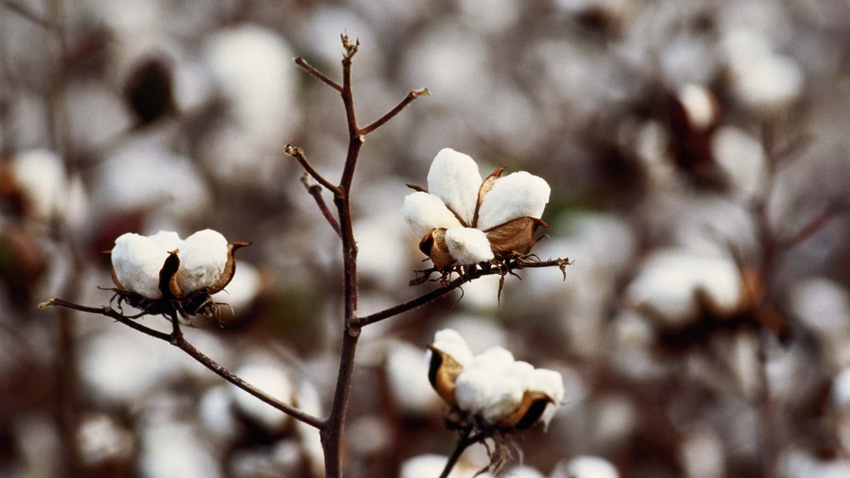
Since November, July 2023 cotton futures have traded in a tame, sideways trading range pattern. On the higher end of that range, is technical price resistance, near 88.00, where on the lower end, support has been at 77.00.
After taking quite a price tumble during the latter months of 2022, prices have stabilized. And when I say stabilized, I mean it – this trading range has held for an astounding seven months!
Tight U.S. supplies
The cotton market found supportive news from last week’s USDA report. On the report, the USDA lowered 2022/23 harvested acres from 7.44 to 7.31. The USDA increased yield from 947 pounds per harvested acre to 950. Due to lower harvested acres, the net result was that production for the 2022/23 crop year was reduced from 14.68 to 14.47 (million 480-pound bales).
On top of that, exports for 2022/23 increased by 400,000 bales, (from 12.2 million to 12.6 million bales). Back in December, I wrote about cotton and thought that with China opening up after Covid, we might start to see an uptick in U.S. exports of cotton. That has occurred.
The net result was a reduction in ending stocks. Ending stocks are now pegged at 3.5 million bales, down 600,000 bales from their prior month’s estimate of 4.1 million bales. Friendly!
For the new crop, 2023/24 crop year, due to a large reduction in planted acres from the year prior, and continued estimates for strong demand, ending stocks are estimated to be even lower than the 2023/24 crop year at 3.3 million bales.
Sufficient global supplies
Now, you would think the market would skyrocket on this news, however, the market remains trapped in this sideways trading pattern for now, as the USDA increased world ending stocks for 2022/23 by 600,000 bales. In April, global ending stocks were marked at 92.01, and now are marked at 92.63.
Watch global weather
Also from a global perspective, the worlds largest producers of cotton are China, India, the United States followed by Brazil. El Nino is making its way into the world, which can mean hot and dry conditions for Asia this summer.
China’s production is already anticipated to be lower than a year ago due to less planted acres (farmers switched to planting grain) and cold weather delayed planting in some areas.
In December, I also suggested that China might be okay with less planted acres of cotton, in lieu of attempting to secure more food acres. They would then rely on imports of cotton from the U.S. and Brazil. Most recently, it has been suggested that China will also be importing cotton from India.
Here in the U.S., the cotton crop is still getting planted. According to the most recent crop progress report, cotton is 35% planted, near the 5-year average of 36%.
For now, cotton futures remain in that sideways pattern, but you’ve heard me say it before – the longer a market trades in a sideways pattern, the bigger the price breakout will be down the road. Higher or lower depends on market fundamentals. Right now, things are starting to potentially shift friendlier for cotton.
Reach Naomi Blohm at 800-334-9779, on Twitter: @naomiblohm, and at [email protected].
Disclaimer: The data contained herein is believed to be drawn from reliable sources but cannot be guaranteed. Individuals acting on this information are responsible for their own actions. Commodity trading may not be suitable for all recipients of this report. Futures and options trading involve significant risk of loss and may not be suitable for everyone. Therefore, carefully consider whether such trading is suitable for you in light of your financial condition. Examples of seasonal price moves or extreme market conditions are not meant to imply that such moves or conditions are common occurrences or likely to occur. Futures prices have already factored in the seasonal aspects of supply and demand. No representation is being made that scenario planning, strategy or discipline will guarantee success or profits. Any decisions you may make to buy, sell or hold a futures or options position on such research are entirely your own and not in any way deemed to be endorsed by or attributed to Total Farm Marketing. Total Farm Marketing and TFM refer to Stewart-Peterson Group Inc., Stewart-Peterson Inc., and SP Risk Services LLC. Stewart-Peterson Group Inc. is registered with the Commodity Futures Trading Commission (CFTC) as an introducing broker and is a member of National Futures Association. SP Risk Services, LLC is an insurance agency and an equal opportunity provider. Stewart-Peterson Inc. is a publishing company. A customer may have relationships with all three companies. SP Risk Services LLC and Stewart-Peterson Inc. are wholly owned by Stewart-Peterson Group Inc. unless otherwise noted, services referenced are services of Stewart-Peterson Group Inc. Presented for solicitation.
The opinions of the author are not necessarily those of Farm Futures or Farm Progress.
About the Author(s)
You May Also Like






